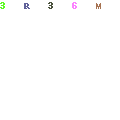Last December I spent some time in the Cote d’Azur looking for links to Napoléon in time for the Napoleonic Bicentenary, and to my amazement found Pablo Picasso as well. It is unsurprising that Picasso made the Cote d’Azur his home, artists aplenty have flocked here for the light, however what did shock me is that two men with such differing ideologies are so synonymous with the same area.
In 1948, Picasso came to live in Vallauris where he stayed until 1955 and during his time here, he created a great many sculptures and paintings including War and Peace, which was one of the major artworks of the period. The National Picasso Museum is home to a number of his ceramics as well as this monumental painting, and where we first caught a glimpes of Picasso.
In 1952, Picasso produced two huge compositions for the Chapel of the Château – which now houses the museum – on hardboard panels that mirrored the curvature of the walls. The first of the two painted panels, “War”, on the left as you enter, is an allegorical composition, with War aloft a tank, bearing a bloody sword in one hand and in the other, a basket from which bacteria from germ warfare – that was greatly feared even then – are escaping. A sack of skulls is slung over his shoulder. Silhouettes of men come up against a Peace fighter, whose shield is decorated with a dove. Behind the dove on the shield appears a transparency of the face of Françoise Gilot.
“Peace” is read from right to left, starting with the three figures underneath a tree. The comparison of the two panels reveals many anthithetical elements, both in the colours (black horse/white horse; black and grey background/green and blue background) and in the themes (horse trampling books/horse ploughing the fields; trampled books/a man writing). In her memoirs, Françoise Gilot then helped him by suggesting, “In peace time, everything is possible; a child could plough the sea”, and so we see a child ploughing the sea, drawn by a winged horse.
The end of the chapel is a later work symbolising Picasso’s wish for all nations to get along in peace “the four parts of the world”.
Our next meeting with this enigmatic artist was in the town’s market square place de l’Eglise. In 1949 Picasso donated “Man with Sheep” to the people of Vallauris and this is where it stands. The sculpture, of which two other copies were made (one in Philadelphia in the USA and the other in the Picasso Museum in Paris), is one of the rare statues the artist created for a public place. Picasso wanted children to be able to climb all over this work, a wish that is fully realised today.
In 1946 Picasso visited a pottery exhibition in Vallauris, he took a particular interest in the Madoura stand and asked to be introduced to the owners – Suzanne and Georges Ramié. They invited him to their Madoura workshop where he made three pieces which he left to dry and bake. A year later Picasso returned to see how the pieces had turned out. He was delighted with the quality of the work and asked if he could make more. They agreed and an area of the workshop was arranged especially for him. Immediately, he began to work, inspired by his portfolio of sketches. The familiar themes included bullfighting scenes, portraits and nature – goats, birds, and fish. In 24 years over 633 pieces were created in limited editions all engraved with the Madoura stamp. This was our next meeting.
Our final introduction to this fascinating man was at the Picasso Museum in Antibes. Set in a medieval castle belonging to the Grimaldi family, the property was bought by the city of Antibes in 1925 and turned into a museum. In September 1946, Pablo Picasso was offered a workshop in the castle. Enthused, he created numerous works including 23 paintings and 44 drawings. Among the most famous paintings: La Joie de Vivre, Satyr, wildlife and centaur trident, The Sea Urchin Slimer, The Woman with Sea Urchins, Still life with owl and three Urchins, The Goat.
CRT Côte d’Azur Tourisme is a client of Magellan PR. Follow them on Twitter @Visit_Cotedazur and on Facebook/Côte d’Azur Tourisme.
Contributor and photography Alexandra Pinhorn.
Magellan PR is on twitter: @MagellanPR / on Facebook: MagellanPR / on Pinterest: Sue Lowry / on Google+: Sue Lowry & MagellanPR and on Flickr: Sue Lowry. For more information on our company, visit www.magellan-pr.com. Follow our other blog focussing on travel in the South of England – A3 Traveller
The post Finding Picasso on the Route Napoléon appeared first on MagellanStraits.








